An Animal That Feeds Exclusively on Plants is
This blog is going to do a deep dive into our Top 10 Animals That Eat Plants! With more and more humans deciding to eat only plant based diets, this is becoming a more and more interesting topic!
These animals that interact with plants are known as herbivores who consume large quantities of plant matter every day to fulfill their appetite.
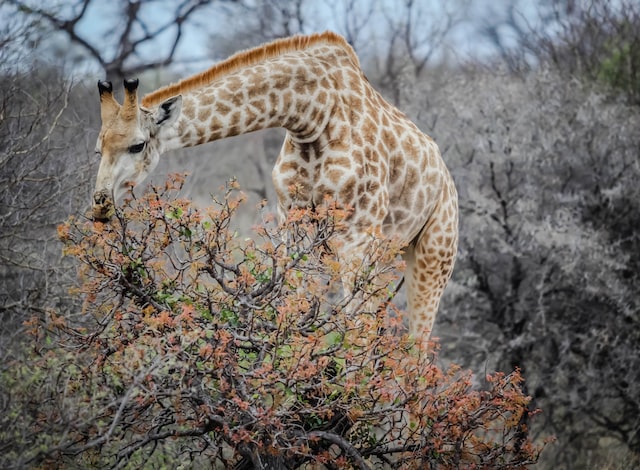
It isn't necessary for a herbivore to be of a specific size. In fact, the largest animals alive on earth today are all herbivores. The top 11 animals that eat plants have their bodies adapted to grazing grass and eating leaves that are abundantly present everywhere.
Now, if you're curious to know why nature has classified the world into different categories, namely herbivores, carnivores, and omnivores, you will be amazed to know the reason.
So, buckle up and keep reading to know some exciting facts regarding herbivores and a brief outline of the top 11 animals that eat plants.
Why Do Animals Eat Plants?
This is the main area of discussion as to why nature has made herbivores adapt to eating green matter only.
Similar to how lazy human beings feel for the most part of their day, animals tend to avoid tasks too that consume a lot of their energy, such as catching prey. Therefore, the easiest way forward for these animals is to eat what is abundantly available without having to work hard for it.
Besides, if there were no herbivores on this planet, we would've been surrounded by heaps of uncontrollable vegetation. Similarly, if there were no carnivores on earth, there would've been too many herbivores to strip the world of its foliage.
Therefore, nature's way of keeping a balanced ecosystem is primarily the reason why we have equal proportions of herbivores and carnivores on earth.
Sounds fascinating, right?
How Do Herbivores Digest Their Food?
If you're thinking that a herbivore's digestive system is the same as that of a typical carnivore having a simple digestive tract, you're highly mistaken!
A few plant-eating animals, such as camels, giraffes, and deers, have a complex digestive system with more than one stomach cavity and a long digestive tract.
Moreover, all herbivores have large and flat teeth to help grind the green matter effectively and break through the cellulose cell walls of the plant cells. Special fluids and bacteria in the stomach help digest the food.
In the case of animals with multiple stomach chambers, they continuously chew the food back and forth from one stomach chamber to another until it has passed from all of them. This aids in the effective digestion of food without leaving unnecessary digestive matter behind.
Top 10 Animals That Eat Plants In The World
Plant-eating animals are a rather fascinating species of the animal kingdom. Their unique lifestyle and behavior that helps them survive in this evolving world are very exciting to study about.
So, stay with us to discover some of the most amazing facts about animals that depend on plants to stay alive!
1. Cow
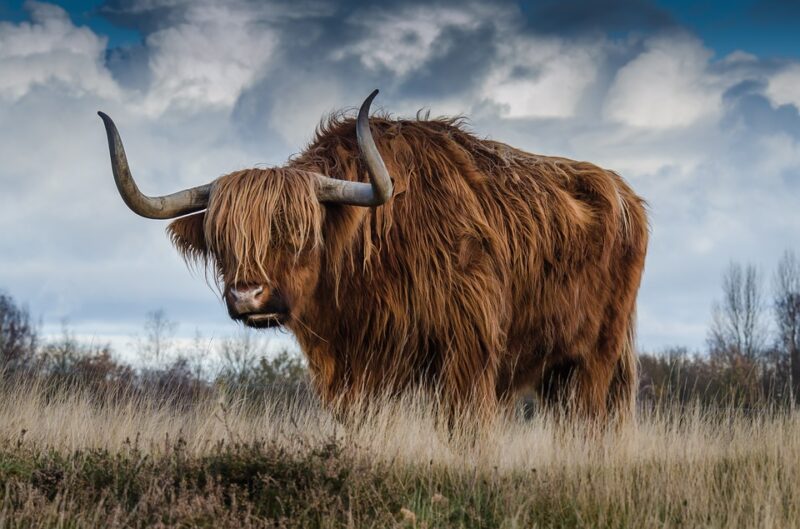
Cows are domestic species found everywhere in the world. They make excellent farm animals that provide various benefits to human beings. For example, we consume cow meat and milk and use their skin to make leather products.
These domestic mammals are bulky and come in different colors, ranging from white, brown, and black. Their weight ranges up to 2000 pounds, almost equal to that of a small car! The two horns present on their heads distinguish them from other species of cattle.
The anatomy of cows is evidence that these animals are perfectly herbivorous. Their wide mouths, coupled with huge flat teeth, aid them in grazing grass and chewing tough plant species.
If you've been to the countryside, you may have seen cows chewing on something, with their mouths constantly moving in circular motions.
This is primarily because they are ruminants with a four-chambered stomach that constantly brings food back and forth for them to chew until it reaches the last chamber.
This implies that digesting food is not a matter of concern for cows, and they are able to ingest lots of grass while grazing because their stomach is there to do the job of digestion effectively.
2. Goat
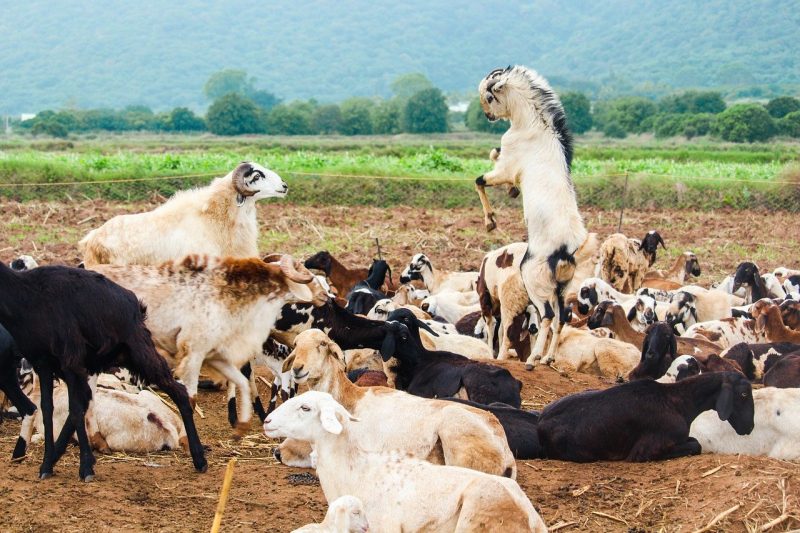
Goats are rotund herbivores that possess horns and cloven feet. They may be domestic and kept on farms for their meat and milk. Some goats are, however, native to mountain areas with rugged and rocky terrains.
Their slim bodies, cloven hooves, and fit muscular strength allow them to climb steep mountainous territories with ease.
These animals mostly spend their time grazing grass in surrounding areas in the form of herds, vegetation being their primary source of food. Despite being fond of grazing grass, the mountain goats are habitual of eating big plants and mosses.
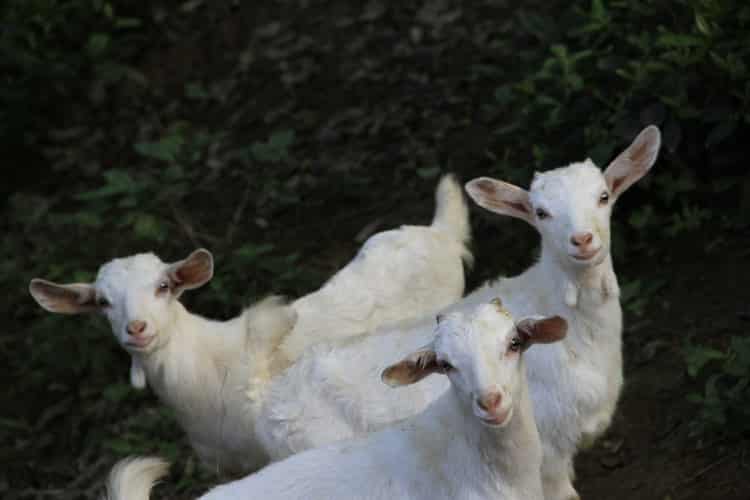
The lips of a goat are big enough to help them grab food and slide it into their mouths. Moreover, they have a wider upper jaw compared to the lower jaw, which is why they only chew the food in circular motions from the sides of their mouth.
Like most other grazing species, such as cattle, goats have chambered stomachs made up of 4 cavities that can hold huge gallons of food in an instant. It takes around 15 hours to digest their food completely.
3. Deer
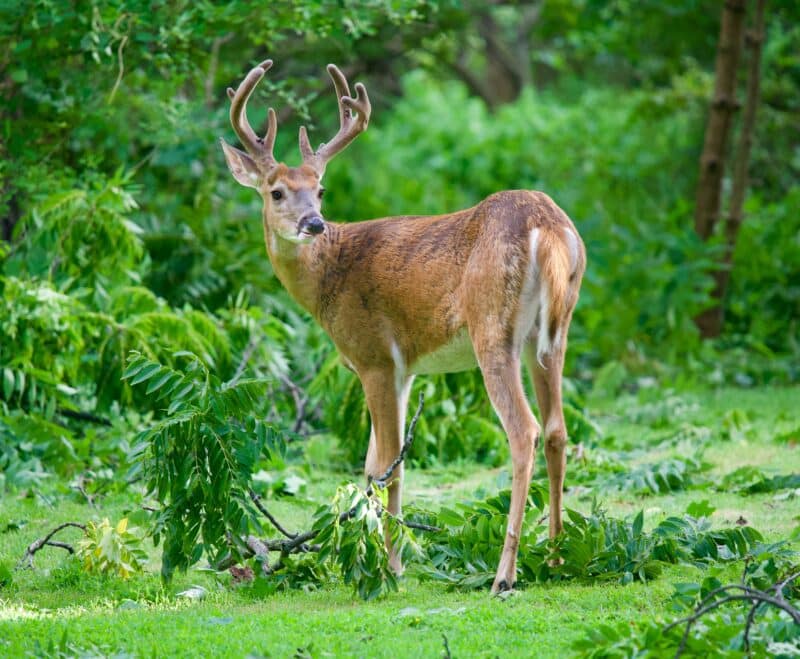
Deers are the most evolved species on earth that have experienced several mutations due to competitive environments.
Their huge specialized horns, known as the antlers, are used to safeguard them from predator attacks since they are capable of throwing a counterattack. This characteristic makes them a distinctive herbivorous species of the wild.
There are several species of deer alive on this planet that are, indeed, a fascinating creation of nature. They come in a myriad of distinctive coat colors, ranging from brown to gray, and have short tails.
Deers are herbivores with specialized body systems that help them feed and digest the green matter effectively. Their motile lips and specialized teeth aid in the process of plucking and ingesting food in their four-chambered stomach.

These ruminants tend to be very picky about their diet. Their antlers shed and regrow every year, requiring them a huge variety of nutrients to cope with the growing process.
Therefore, they have a natural preference for eating good-quality food rich in nutrients that are imperative for the antler growth process.
4. Horse
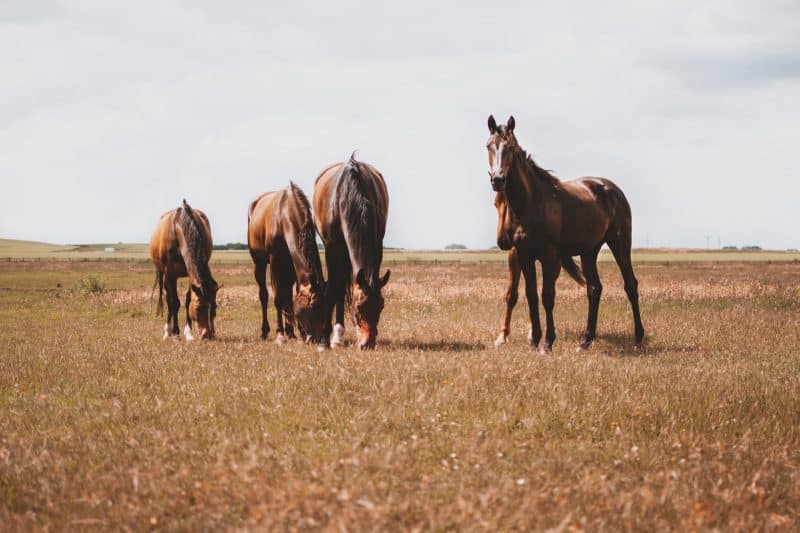
The horses we see in our daily lives are domesticated species descended from the ancient wild horses that are now labeled extinct.
They are the most valuable animals till present for humans as they contributed as the principal source of transport in ancient times and as racing animals for entertainment purposes.
Horses tend to be perfect companions of humans due to their ability to show affection and bond with their fellows.
They come in various beautiful coat colors, ranging from white to chestnut brown and gold to black. Moreover, their strong muscular bodies make them exceptionally fast runners.
These herbivorous animals are adapted to eating grass since their large and flat frontal teeth allow them to pluck the grass out of the ground. The set of molars and premolars then aid in chewing.

The digestive system of these animals is, however, different from the usual herbivores. Their stomachs are very small compared to their large bodies, which is why they are used to eating less but recurrent meals every day.
5. Gorilla
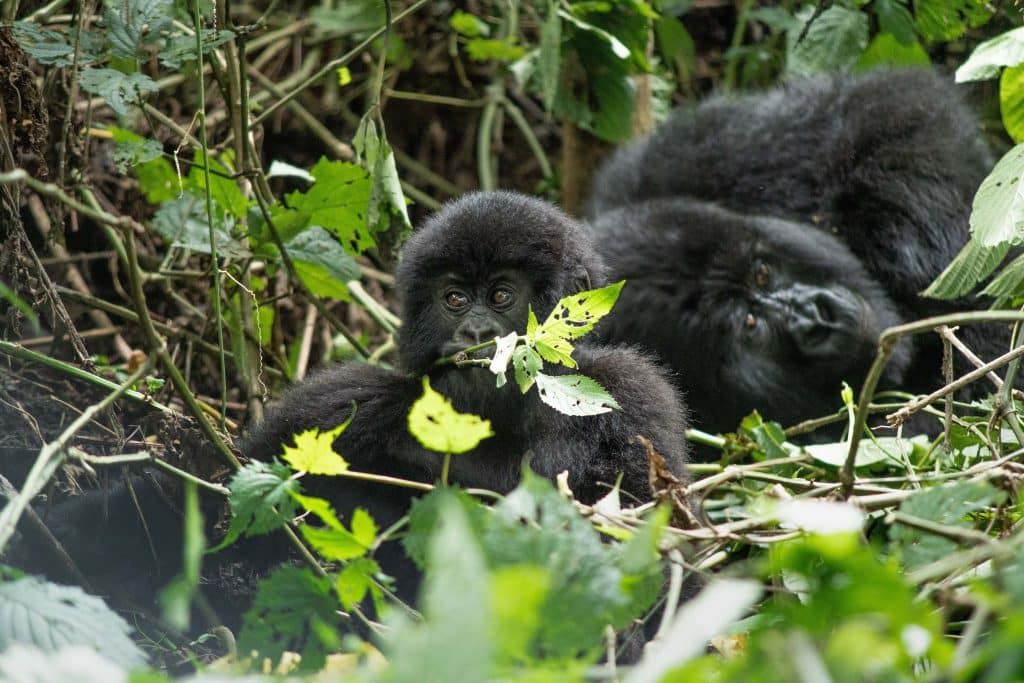
If you've watched the Hollywood movie "King Kong," you might be familiar with what a gorilla is. These giant apes are native to mountains and lowland areas of Africa.
A surprising fact: Gorillas are one of those animals closely related to human beings.
These gigantic creatures are extremely powerful, with big hairy bodies and a bulging abdomen. The most distinguishing part of their appearance is their big round nostrils protruding outwards.
Gorillas tend to walk on their four limbs with much of their weight on the knuckles that support them while walking.
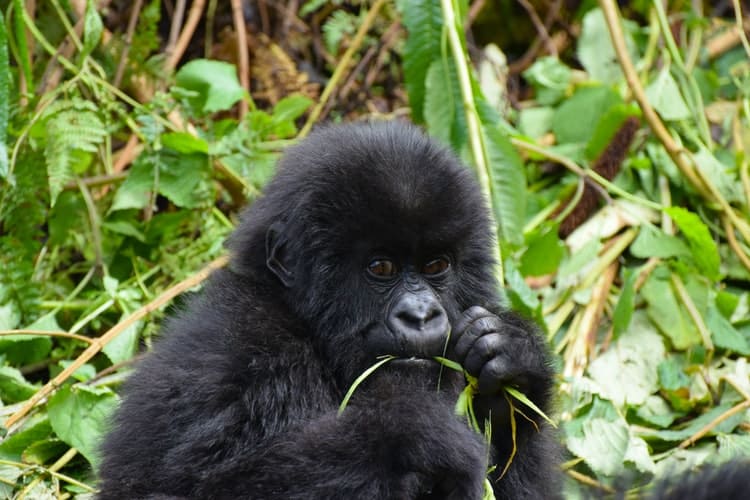
Quite surprisingly, gorillas despise water and usually don't even drink water for days. They hydrate themselves through the food they eat or the morning vapors.
These vegetarian species feed primarily on the green matter, including leaves and tree stalks. A few western species prefer eating fruits. However, they are known to eat small mammals and insects occasionally too.
6. Zebra
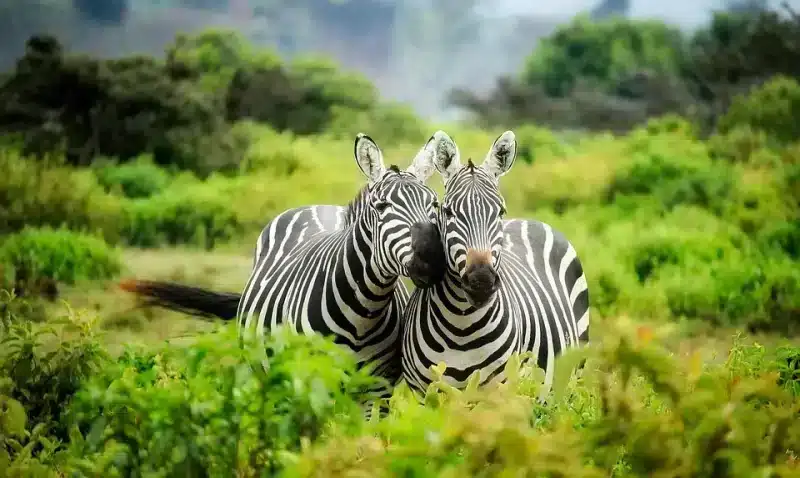
Zebras are one of the most captivating species of the wild and are famous for their characteristic black and white striped coat. These African natives are found in the grasslands and woodlands and are closely related to the family of horses and donkeys.
The stripes on their body function similar to a human fingerprint, allowing scientists to distinguish between their different species easily.
Zebras have a fantastic system of digestion since their bodies are adapted to filtering proteins and other vital nutrients efficiently from the roughest of grass.

This implies that the quality of food does not matter to these herbivorous species. They tend to survive well in dry periods when the amount and quality of vegetation are low.
They achieve this advantage through rapid digestion, where their stomach and intestines do not hold food inside for long. Therefore, their food intake must be large enough at all times in order to provide adequate nutrients and nourishment to their bodies.
7. Panda
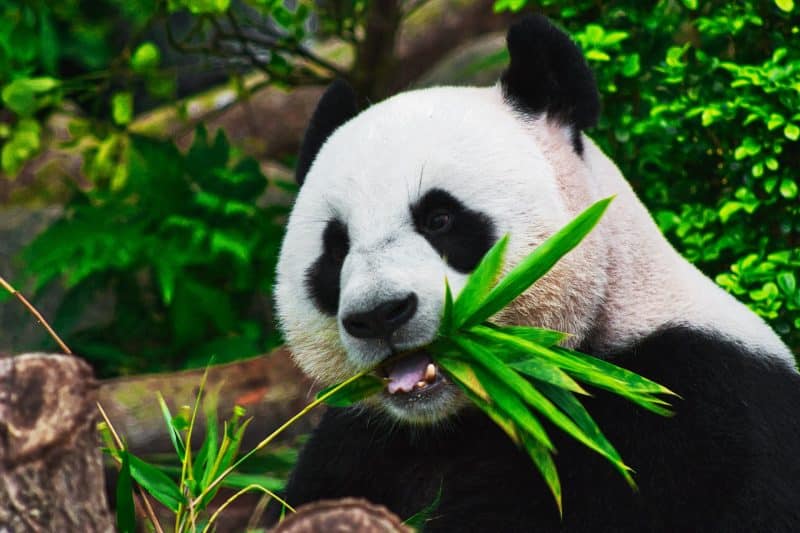
Giant pandas are the most adorable species on earth that are closely related to the family of bears. They are indigenous to the bamboo forests of China and were known to be on the verge of extinction before being conserved.
Pandas are famous for their beautiful black and white patterned fur that helps them camouflage and to attract their mates.
Moreover, the reason why we love pandas is that they eat and sleep all day, a thing every human being can relate to!
These charming creatures cannot survive a day without bamboo. In fact, they spend around 12 hours every day devouring bamboo! They use their huge hands to grab the bamboo stalks, and their sharp teeth aid in removing the hard outer layer.
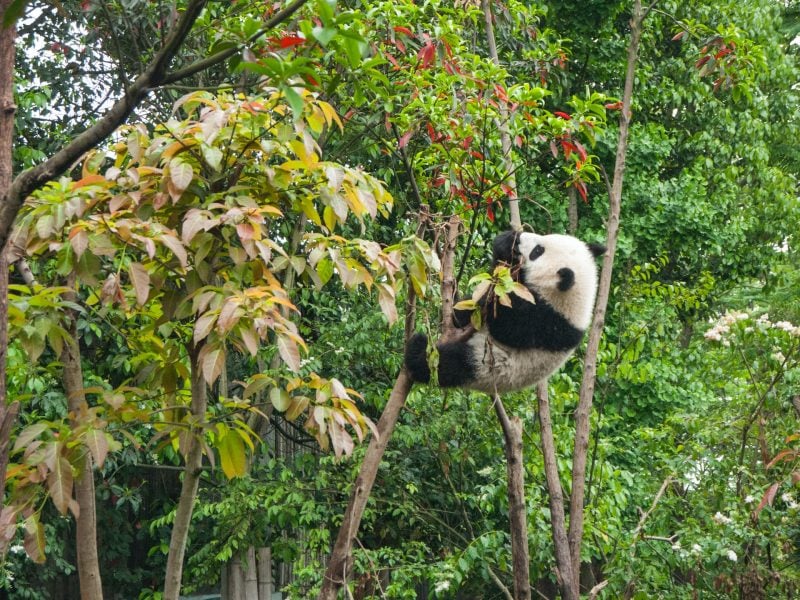
They have strong jaws that help chew the inner matter of a bamboo stalk. Moreover, they also have a particular liking for the bamboo leaves and consume them altogether by stripping them off a branch.
However, these are not the only particulars forming a giant panda's diet. They basically consume anything available to them, including fruits, small insects, and even rodents.
8. Elephant
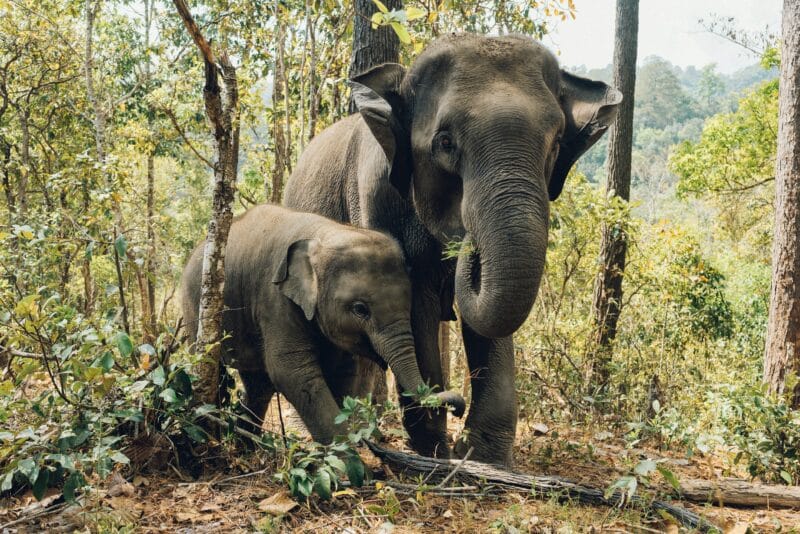
Elephants are the biggest terrestrial animals that have highly distinct anatomy and complex behaviors. These creatures are often found dwelling in Asian and African forests and savannas.
The biggest land animal at present is the African bush elephant, weighing more than 9 tonnes!
These creatures of the wild have a distinctive physical appearance incorporating a huge prehensile trunk, gigantic ears, and thick white ivory tusks.
An elephant's trunk is very useful to the species as it performs the task of helping them in eating, drinking, breathing, loading, etc. Moreover, they consume the leaves and fruits from trees using their trunks to pluck the food and put it in their mouth.
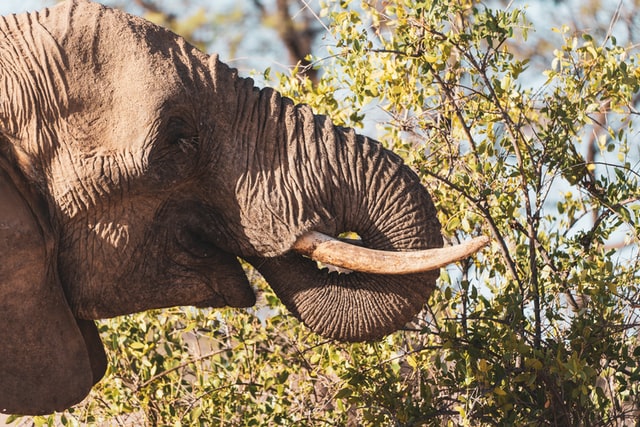
Despite their gigantic bodies, elephants feed on plant matter to get their nourishments which is why they have to eat more than 350 pounds of vegetative matter every day.
In addition to that, elephants are grass grazers as well which they consume when they are not comfortable searching for plants and fruits to eat.
9. Kangaroo
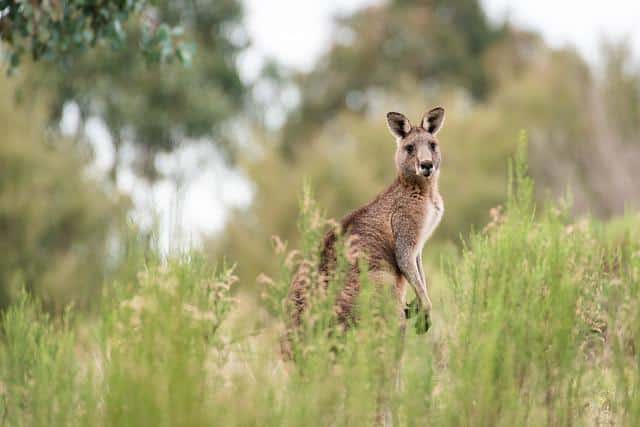
Kangaroos are an interesting species of the wild that are known for hopping behavior. There are currently 14 different species of kangaroos native to Australian woodlands.
The anatomy of a kangaroo is highly distinct, where the species rely on their long hind legs to hop and bounce their way forward. Their thick and long tails help them maintain balance while jumping.
These adorable creatures have small forelimbs, almost relating to a human arm. Moreover, the female kangaroos have a pouch on their abdomens that contain mammary glands to feed and shelter their babies until they are mature enough to leave the mother's body.
At a time, a female kangaroo is capable of giving birth to four little joeys (baby kangaroos), although it is very rare. A point to acknowledge here is that the little ones look simply adorable in their mother's pouch!
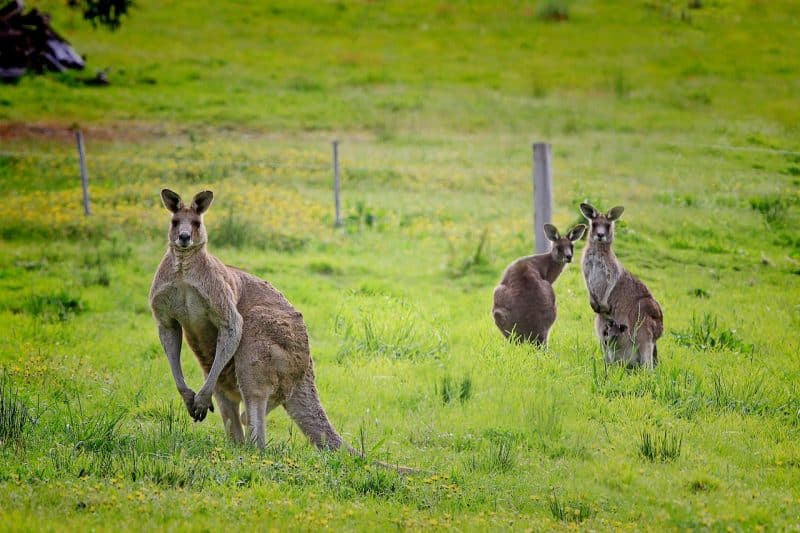
Besides, kangaroos are herbivorous creatures who depend almost entirely on grass, flowers, and plants to fulfill their appetite. In addition, some of them may consume moss and even insects at times.
Their digestive tract resembles that of cattle. Their four-chambered stomachs ensure that the food they consume is digested fully and the nutrients are assimilated perfectly in their bodies.
Moreover, their perfectly built dental structure ensures that the food they eat is ground to perfection before moving into the stomach.
If you're a kangaroo lover, click here to learn more about these adorable creatures.
10. Koala Bear
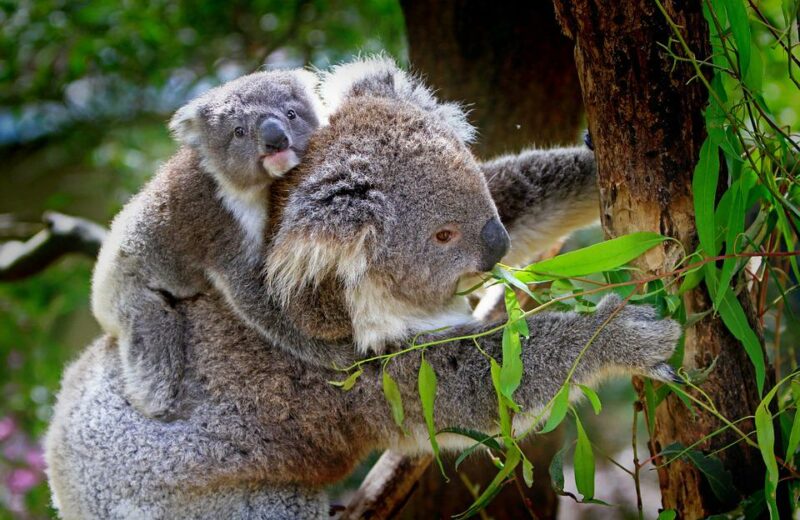
Koalas are interesting tree-climbing creatures of the Australian wildlife that are similar to the family of kangaroos in the way that they carry their offspring in pouches on their abdomen.
They have a furry appearance resembling that of a sheep and have sharp claws and toe pads to help them climb trees easily.
They are habitual of eating and sleeping for the most part of their day. Their food and shelter depend entirely on eucalyptus trees where they live and eat eucalyptus leaves.
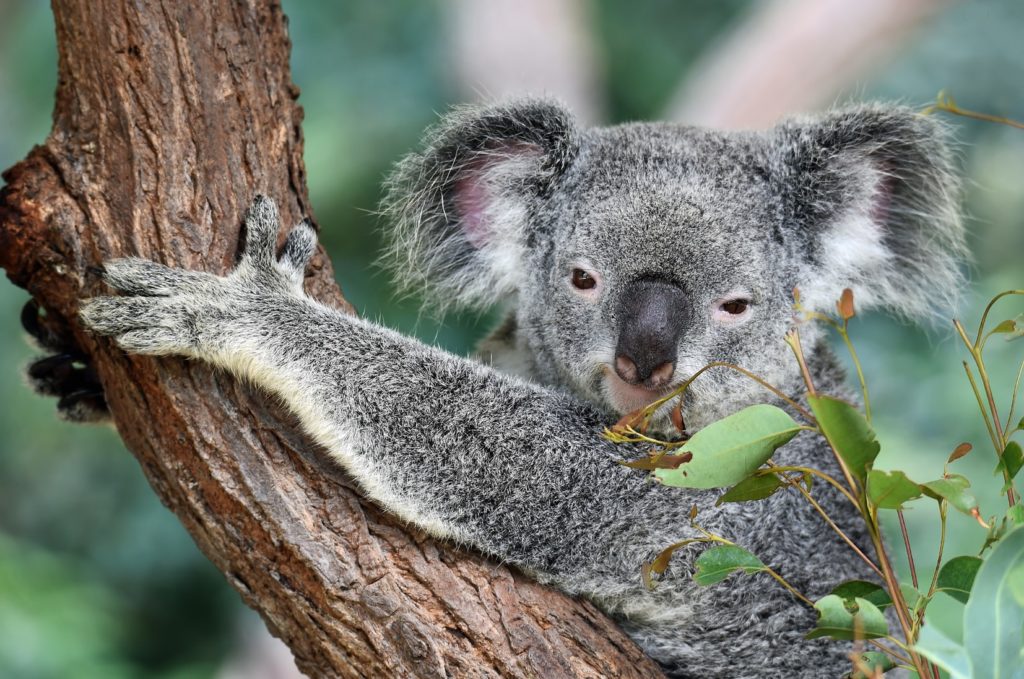
Despite the toxic nature of eucalyptus leaves, a koala's digestive system is adapted to removing the harmful toxins from its body and absorbing only the nutrient content.
Due to significantly less nutrient consumption, koalas feel lazy and sleepy throughout the day.
Unfortunately, their constant poaching for fur has led to a remarkable decline in their population. In fact, the southern population of koalas is almost on the verge of extinction.
Bonus Animal! The Giraffe
Giraffes are the most interesting species of the African wild that are known to be the tallest mammals alive on earth. Their characteristic tall legs and neck are larger in height than an average adult human being!
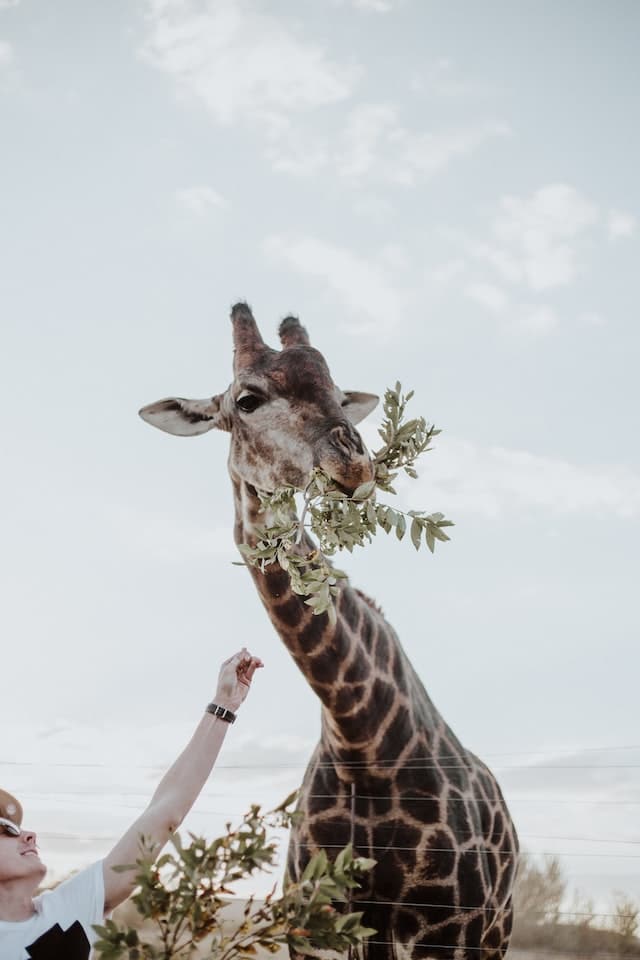
These cute creatures have a rather unique and beautiful coat patterned with irregular blocks ranging from chestnut brown to dark brown in color.
The rest of their skin is light yellow-colored, providing them with the perfect camouflage by blending in with the tall trees in the woodlands.
These herbivorous species feed on leaves and fruits from tall trees since they have the advantage of reaching heights no other mammal can get to.
Moreover, being a massive creature compels them to consume a considerable amount of food every day, approximately equal to 75 pounds!
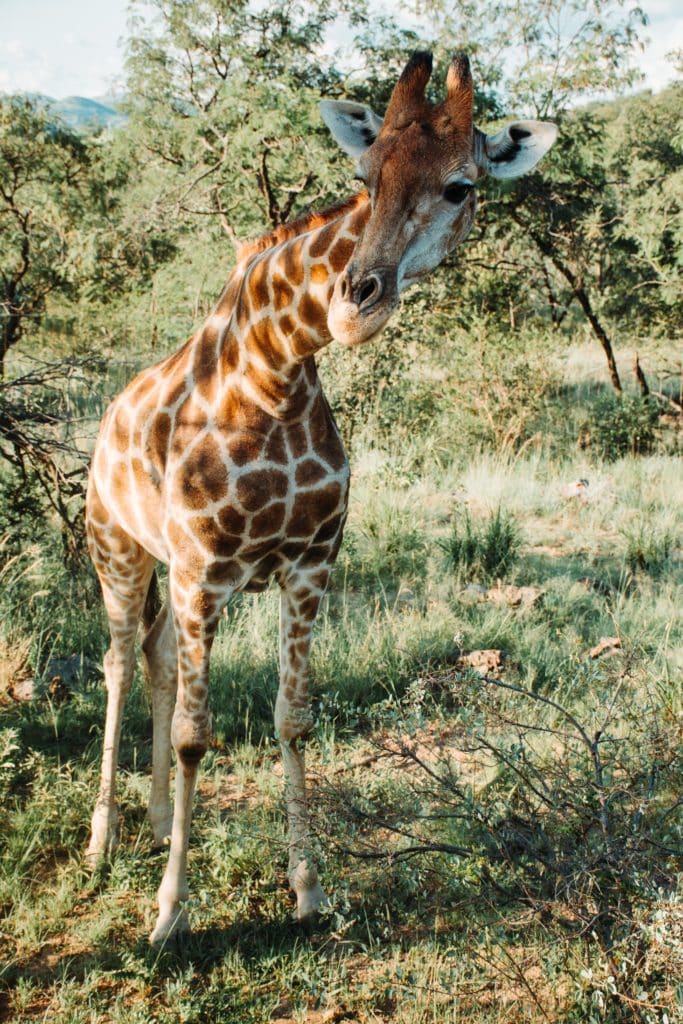
In addition, a giraffe's tongue is prehensile, similar to an elephant's trunk and a monkey's tail, which helps it in plucking food and pulling it inside their mouths.
The Final Word on Animals That Eat Plants
Animals are a pivotal part of our ecosystem, without whom the world would've been a strange place to live in.
Nature has granted animals the ability to maintain a balance in their surroundings. The herbivores control the amount of greenery in the world, while the carnivores ensure that the herbivores don't strip the earth of its natural green charm.
Therefore, it is the duty of man to conserve the wildlife surrounding them and make the world a safe haven for them.
If you enjoyed this blog, you may really enjoy a few others! Check them out below:
Animals in Africa
9 Best Places to See Kangaroos in the Wild
Source: https://www.animalsaroundtheglobe.com/animals-that-eat-plants/



0 Response to "An Animal That Feeds Exclusively on Plants is"
Post a Comment